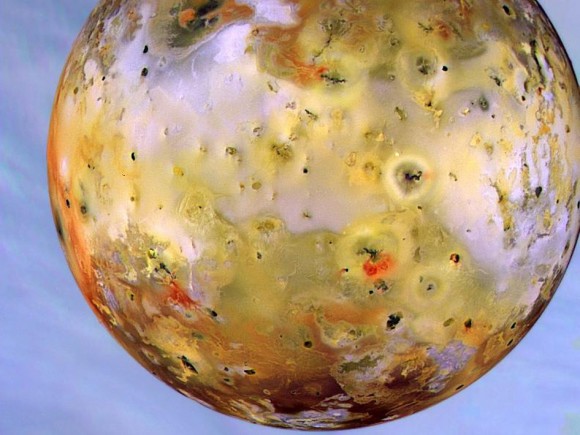

| Visitors Now: | |
| Total Visits: | |
| Total Stories: |

| Story Views | |
| Now: | |
| Last Hour: | |
| Last 24 Hours: | |
| Total: | |
New Molecules Detected in Io’s Atmosphere

An image of Io taken by the automated spacecraft: Galileo. Image Credit: NASA
Io – Jupiter’s innermost Galilean moon – is the most geologically active body in the Solar System. With over 400 active volcanic regions, plumes of sulfur can climb as high as 300 miles above the surface. It is dotted with more than 100 mountains, some of which are taller than Mount Everest. In between the volcanoes and mountains there are extensive lava flows and floodplains of liquid rock.
Intense volcanic activity leads to a thin atmosphere consisting mainly of sulfur dioxide (SO2), with minor species including sulfur monoxide (SO), sodium chloride (NaCl), and atomic sulfur and oxygen. Despite Io’s close proximity to the Earth the composition of its atmosphere remains poorly constrained. Models predict a variety of other molecules that should be present but have not been observed yet.
Recently a team of astronomers from institutions across the United States, France, and Sweden, set out to better constrain Io’s atmosphere. They detected the second-most abundant isotope of sulfur (34-S) and tentatively detected potassium chloride (KCl). The latter is produced in volcanic plumes – suggesting that these plumes continuously contribute to Io’s atmosphere.
(…)
Read the rest of New Molecules Detected in Io’s Atmosphere (495 words)
© Shannon Hall for Universe Today, 2013. |
Permalink |
No comment |
Post tags: Io, jupiter’s moons
Feed enhanced by Better Feed from Ozh
Source: http://www.universetoday.com/104867/new-molecules-detected-in-ios-atmosphere/


